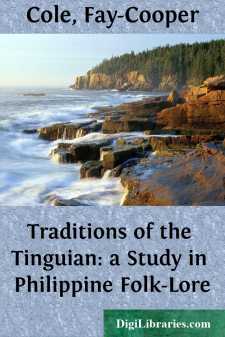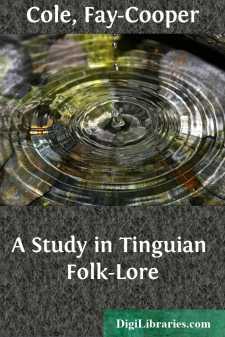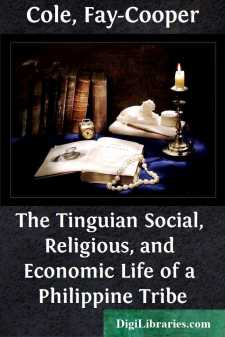Categories
- Antiques & Collectibles 13
- Architecture 36
- Art 48
- Bibles 22
- Biography & Autobiography 813
- Body, Mind & Spirit 142
- Business & Economics 28
- Children's Books 17
- Children's Fiction 14
- Computers 4
- Cooking 94
- Crafts & Hobbies 4
- Drama 346
- Education 46
- Family & Relationships 57
- Fiction 11829
- Games 19
- Gardening 17
- Health & Fitness 34
- History 1377
- House & Home 1
- Humor 147
- Juvenile Fiction 1873
- Juvenile Nonfiction 202
- Language Arts & Disciplines 88
- Law 16
- Literary Collections 686
- Literary Criticism 179
- Mathematics 13
- Medical 41
- Music 40
- Nature 179
- Non-Classifiable 1768
- Performing Arts 7
- Periodicals 1453
- Philosophy 64
- Photography 2
- Poetry 896
- Political Science 203
- Psychology 42
- Reference 154
- Religion 513
- Science 126
- Self-Help 84
- Social Science 81
- Sports & Recreation 34
- Study Aids 3
- Technology & Engineering 59
- Transportation 23
- Travel 463
- True Crime 29
Traditions of the Tinguian: a Study in Philippine Folk-Lore
by: Fay-Cooper Cole
Description:
Excerpt
Introduction
For the purposes of our study, the tales have been roughly divided into three parts. The first, which deals with the mythical period, contains thirty-one tales of similar type in which the characters are for the most part the same, although the last five tales do not properly fit into the cycle, and the concluding story of Indayo is evidently a recent account told in the form of the older relations.
In the second division are the ritualistic and explanatory myths, the object of which seems to be to account for the origin of or way of conducting various ceremonies; for the belief in certain spirits and sacred objects; for the existence of the sun, moon, and other natural phenomena; for the attainment of fire, food plants, birds and domestic animals, as well as of magical jars and beads. Here it should be noted that some of the most common and important beliefs and ceremonies are, so far as is known, unaccompanied by any tales, yet are known to all the population, and are preserved almost without change from generation to generation.
Division three contains the ordinary stories with which parents amuse their children or with which men and women while away the midday hours as they lounge in the field houses, or when they stop on the trail to rest and smoke.
None of the folk-tales are considered as the property of the tellers, but only those of the third division are well known to the people in general. Those of the first section are seldom heard except during the dry season when the people gather around bonfires in various parts of the village. To these go the men and women, the latter to spin cotton, the former to make fish nets or to repair their tools and weapons. In such a gathering there are generally one or more persons who entertain their fellows with these tales. Such a person is not paid for his services, but the fact that he knows “the stories of the first times” makes him a welcome addition to the company and gives him an enviable position in the estimation of his fellows.
The purely ritualistic tales, called dÐâЫams, are learned word by word Page 6by the mediums,
as a part of their training for their positions, and are only recited while an animal is being stroked with oil preparatory to its being sacrificed, or when some other gift is about to be presented to the superior beings. The writer has recorded thesedÐâЫamsfrom various mediums in widely separated towns and has found them quite uniform in text and content. The explanatory tales were likewise secured from the mediums, or from old men and women who “know the customs.” The stories of the last division are the most frequently heard and, as already indicated, are told by all. It is evident even to the casual reader that these show much more evidence of outside influence than do the others; some, indeed, appear to have been recently borrowed from the neighboring christianized Ilocano.Tales of the Mythical Period
Reconstruction of the Culture.—In the first division certain actors occur with great frequency, while others always take the leading parts....





